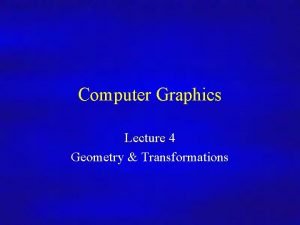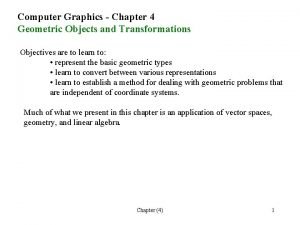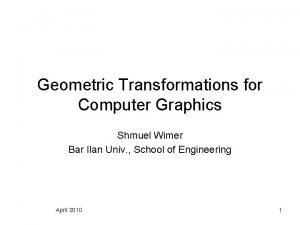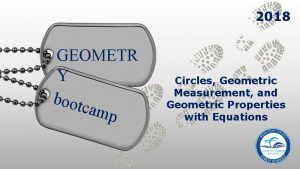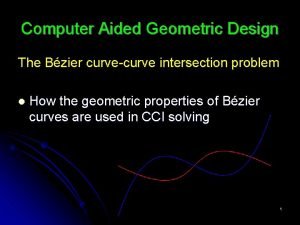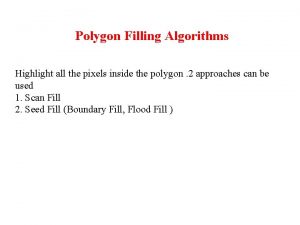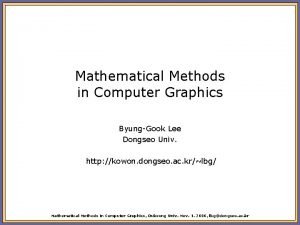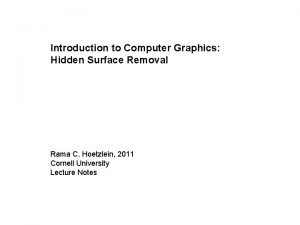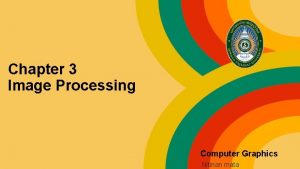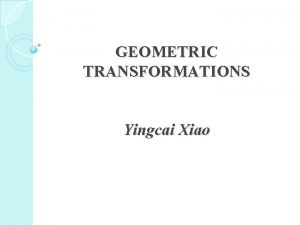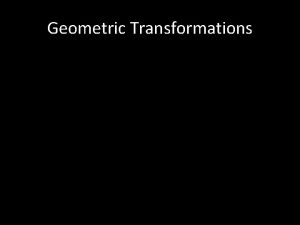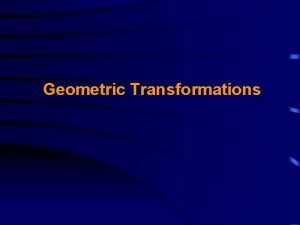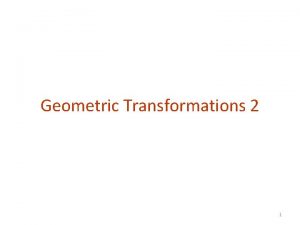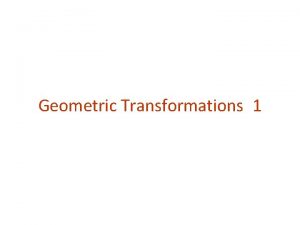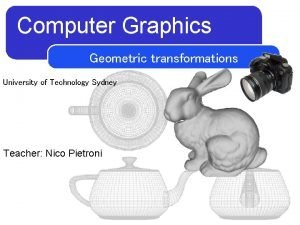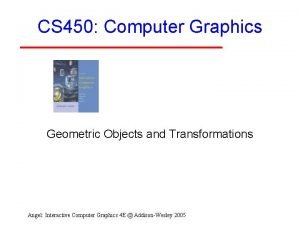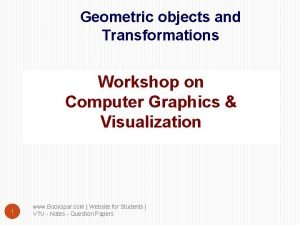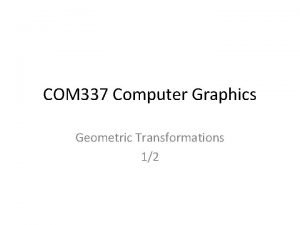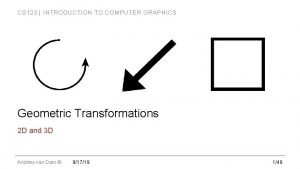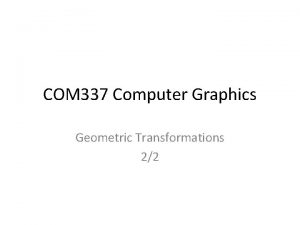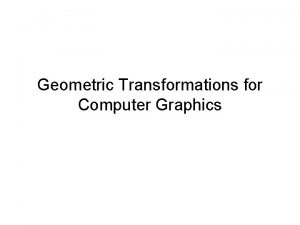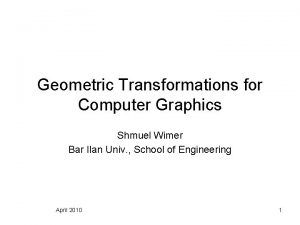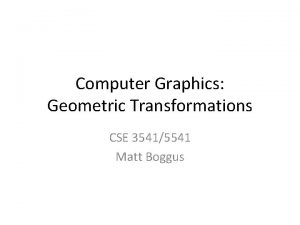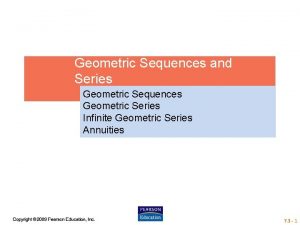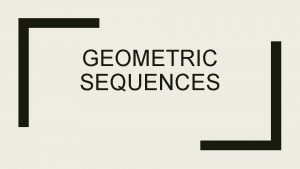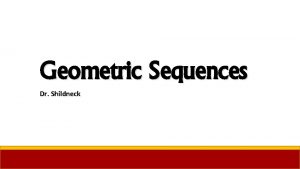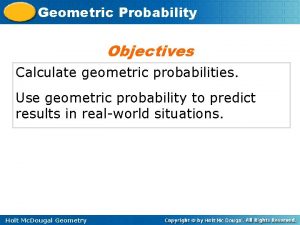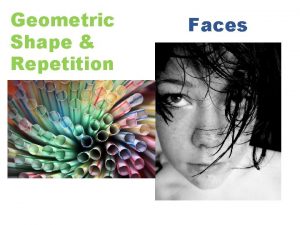Chapter 5 Geometric Transformations for Computer Graphics Nitinan


























- Slides: 26

Chapter 5 Geometric Transformations for Computer Graphics Nitinan mata

2 D Translation 2

2 D Rotation 3

2 D Scaling 4

Homogeneous Coordinates April 2010 5

2 D Translation 2 D Rotation 2 D Scaling 6

Inverse transformations: Composite translations: 7

Composite Rotations: Composite Scaling: 8

General 2 D Rotation Move to origin Rotate Move back 9

General 2 D Scaling Move to origin Scale Move back 10

2 D Directional Scaling 11

2 D Reflections April 2010 12

3 2 2 1 1 3 2 3 13

Geometric Transformations by Rasterization • The transformed shape needs to be filled. – A whole scan-line filling is usually in order. • However, simple transformations can save new filling by manipulating blocks in the frame buffer. Translation: Move block of pixels of frame buffer into new destination. 14

90° counterclockwise rotation 180° rotation Rotated pixel block Destination pixel array RGB of destination pixel can be determined by averaging rotated ones (as antialiasing) April 2010 15

3 D Transformations Very similar to 2 D. Using 4 x 4 matrices rather than 3 x 3. Translation April 2010 16

General 3 D Rotation 1. Translate the object such that rotation axis passes through the origin. 2. Rotate the object such that rotation axis coincides with one of Cartesian axes. 3. Perform specified rotation about the Cartesian axis. 4. Apply inverse rotation to return rotation axis to original direction. 5. Apply inverse translation to return rotation axis to April 2010 17

18

19

20

April 2010 21

22

Efficient 3 D Rotations by Quaternions 23

24

3 D Scaling Enlarging object also moves it from origin 25

Scaling with respect to a fixed point (not necessarily of object) 26
 Transformation computer graphics
Transformation computer graphics Polygon clipping in computer graphics ppt
Polygon clipping in computer graphics ppt Graphic monitor and workstation in computer graphics
Graphic monitor and workstation in computer graphics Graphics hardware in computer graphics ppt
Graphics hardware in computer graphics ppt The basic geometric transformations are
The basic geometric transformations are Pixel array
Pixel array 2018 geometry bootcamp answers
2018 geometry bootcamp answers Points and lines in computer graphics ppt
Points and lines in computer graphics ppt Computer aided geometric design
Computer aided geometric design Angel
Angel Define viewing in computer graphics
Define viewing in computer graphics Plasma panel display in computer graphics
Plasma panel display in computer graphics Interior and exterior clipping in computer graphics
Interior and exterior clipping in computer graphics Shear transformation in computer graphics
Shear transformation in computer graphics Glsl sincos
Glsl sincos Scan conversion of ellipse
Scan conversion of ellipse Computer graphics
Computer graphics Region filling algorithm in computer graphics
Region filling algorithm in computer graphics Starburst method
Starburst method Polygon fill algorithm in computer graphics
Polygon fill algorithm in computer graphics In raster scan display, the frame buffer holds
In raster scan display, the frame buffer holds Computer graphics
Computer graphics Which of the following is a line drawing algorithm
Which of the following is a line drawing algorithm Cs 418 interactive computer graphics
Cs 418 interactive computer graphics Glcreatebuffer
Glcreatebuffer Depth sorting method in computer graphics
Depth sorting method in computer graphics Achromatic light in computer graphics
Achromatic light in computer graphics
